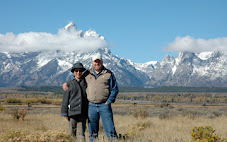I'm getting a little tired of planes, but I think this is my last trip for a while. I went to Boca Raton to meet with a company partner on Saturday. They didn't give me an agenda until the day before I left to Florida, and because it took most of a day to get there, I scheduled my return trip for Sunday to make sure I'd have plenty of time to meet. It turned out that we met all Saturday morning, but then I was free, which gave me the afternoon and Sunday morning to goof off. Here's how I spent my time.
I stayed and had meetings at the Boca Raton Resort and Club. This is Saturday morning looking out the balcony of my room in the Yacht Club part of the hotel.
After the meetings I drive out to Everglades National Park. Years ago I toured the northern end of the Everglades, which is mostly flat grassland interrupted by canals. This time I go to the southern end, which is also flat grassland (the Everglades are actually a very wide, slow-moving river that drains from Lake Okeechobee). But the southern end opens into Florida Bay, which is the very southern tip of Florida if you don't count the Keys. This is the part of the Everglades with the jungles and mangroves.
If the turkey vultures are active, they will pick the rubber out of car molding and windshield wipers.
So the Park Service provides these tarps. The lady in the gift shop tells me the vultures aren't around, so I don't bother to protect the rental car (a Dodge Avenger, the clunkiness of which reminds me why I don't buy Chrysler cars), and it doesn't get damaged.
The park is home to a lot of birds, with the Ibis being the most prominent one I see.
The vultures certainly are around. I guess they just aren't hungry for car rubber today.
I can't identify most of the birds I see, but they are beautiful.
I also can't identify most of the fish.
Why do birds come in so many flavors?
I think this is an adult, but it has fuzz on its neck like a young bird.
I wonder, if a person decides to camp here, where does he or she pitch a tent?
A field of Ibises.
I get out of the car and kind of scare them away. Not intentionally, but I like to see them fly anyway.
As I said, the Everglades are very flat.
At the southern end of the park is Flamingo, which sits on Florida Bay. Crocodiles are common in Australia, Africa and elsewhere, but the only crocodile in North American is the rare and endangered American Crocodile. The other similar reptiles throughout the South are alligators. I knew the American Crocodile only lives in the southern Everglades, but I never dreamed I would ever see one. When I get to the boat docks, three are swimming in the channel.
Two get into a fight, with the winner heading back into the channel and the other slinking off into the mangroves.
The two crocs who aren't fighting.
And they head up the channel.
A blue heron.
I don't know what this is.
Unlike the eagle, the osprey will eat only what it kills itself, usually fish that it grabs out of the water with its sharp talons. We see an osprey flying just above the water with a fish clutched with one foot. We see another skimming the water to clean its feet after a kill. Eagles will often fly in and steal fish from the smaller osprey.
Our boat has only four tourists, a guy from the San Francisco Bay Area, a Chinese mother and daughter, and me, so the captain lets us each drive the boat out in the Florida Bay. That is my camera the captain's playing with.
An Ibis heads home for the night. That is an island (called a key in Florida) in the background. In the 1800s, a woman who had nine sons by nine husbands lived there. When the Postal Service wanted a name for the area, being a woman of much influence, she insisted on Flamingo. So that's what this part of the national park is called today. The birds were here by the thousands at that time, but they were easy to catch and kill and were quite tasty, according to our guide, so today there are only a few left.
A small mangrove island.
A flock of Ibises flying home for the night.
And across the setting sun.
Sunday morning I drive to the Everglades Alligator Farm, near the entrance to Everglades National Park. This farm raises alligators just for show. Other farms (I've been to one in Orlando) raise alligators for their meat and leather. This one has a much more natural setting with concrete basins for the babies (shown here) and natural ponds for the adolescents and adults.
More young alligators.
The farm has a rare and endangered Florida panther.
And a tortoise.
This guy does this for $10 per hour.
A blue heron nearby.
And turkey vultures everywhere.
They're not really pretty, but they are interesting creatures.
Heading for the noon feeding.
And I stop at the busiest burger place in Coral Gables for lunch. I'm not sure why it's so busy. It's okay, but not so great.
On the way to the airport, I stop at North Beach and watch the kite boarders. If you click on the picture to enlarge it you can see a guy several feet in the air.
And a few sail boats.
Ending with an airport sunset.




























































